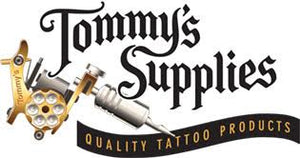Voltage Demystified: How to Adjust Tattoo Machine Settings Like a Pro

TL;DR: Voltage settings determine the speed, force, and consistency of your tattoo machine. Liners typically run at 6–9V, shaders at 8–10V, and color packers may go higher depending on skin type and needle configuration. Learning how voltage affects hit frequency and machine performance is essential for smooth lines, solid fills, and faster healing.
Introduction
One of the most frequently asked questions by new tattoo artists is: “What voltage should I run my tattoo machine at?” The answer isn’t as simple as one number. Voltage influences everything from needle speed to ink saturation and trauma to the skin. Knowing how to adjust your machine based on your task, style, and equipment is a skill every professional must master.
In this article, we’ll break down:
- Ideal voltage ranges for lining, shading, and packing
- How voltage impacts hit frequency and skin trauma
- How machine type and needle configuration factor into your settings
What Is Tattoo Machine Voltage?
Voltage is the electrical pressure your power supply sends to the machine. The higher the voltage, the faster the motor or coils move the needle.
But more speed doesn’t always equal better results. If you go too high:
- Ink can be blown out
- Skin may become overly traumatized
- Healing time may increase
Too low, and you may:
- Struggle with clean lines
- Underdeliver ink
- Get skipping or inconsistent hits
General Voltage Ranges
Rotary Machines
- Lining: 6.5–9V
- Shading: 7.5–10V
- Color Packing: 8.5–11V
Coil Machines
- Lining: 6–8V
- Shading: 8–10V
Note: Coil machines depend more heavily on fine tuning (spring tension, capacitor value, contact screw) and may not follow exact voltage rules.
Voltage for Different Tattooing Tasks
Lining
- Goal: Quick needle movement for single-pass, crisp lines
- Recommended: 7–9V (rotary), 6.5–8V (coil)
- Use shorter tapers and round liners
Shading
- Goal: Smooth, controlled hits for layering tones
- Recommended: 7.5–9.5V (rotary), 8–10V (coil)
- Long taper needles preferred (magnums or curved mags)
Color Packing
- Goal: Saturate pigment densely without blowouts
- Recommended: 8.5–11V (rotary)
- Use magnums or stacked magnums (M1/M2)
Hit Frequency (Cycles per Second)
Voltage directly influences the speed at which your needle moves, aka the “hit frequency.”
- High voltage = more hits per second (better for lining)
- Lower voltage = slower hits (better for smooth shading)
Hit frequency also varies by machine brand and motor type. Some machines come with digital readouts of CPS (cycles per second) instead of just volts—especially in premium power supplies.
Adjusting for Skin Type
- Tough, oily skin: May require higher voltage to penetrate
- Thin or sensitive skin: Lower voltage to reduce trauma
- Scarred or sun-damaged skin: Use mid-range voltage with softer stroke
Always test on a small area and adjust based on how the skin responds.
How to Tune Like a Pro
- Start Low: Begin at the lower end of the range
- Listen: Your machine should run smooth, not bogged down or screaming
- Test Passes: Check how clean the ink lays in 1–2 strokes
- Watch Trauma: If redness or swelling appears too early, lower the voltage
Fine-Tuning Based on Gear
Needle Configuration
- More needles = more resistance
- Use higher voltage for larger mags or stacked groups
Stroke Length
- Machines with longer stroke (4.0mm–5.0mm) hit harder, often at lower voltages
- Machines with short stroke (2.5mm–3.0mm) need slightly higher voltage for similar performance
Wireless Machines
Many wireless machines show voltage on-screen and allow preset memory slots for lining, shading, and color. Learn to create profiles based on your preferred range.
FAQ
Q1: What voltage is best for beginners?
Start with mid-range settings: 7V for lining, 8.5V for shading. Adjust from there.
Q2: Can I damage skin with high voltage?
Yes—too much voltage can cause ink blowouts, excessive trauma, and poor healing.
Q3: Does voltage affect healing time?
Yes. Overworking skin at high voltage may delay healing and lead to raised or scarred tattoos.
Q4: Do different machines have different voltage needs?
Absolutely. Each machine has its own optimal range—consult the manufacturer’s specs.
Q5: Should I use a foot pedal with wireless machines?
It’s optional. Many wireless setups allow button control or Bluetooth foot switches.
Mastering voltage settings is part science, part experience. The best way to learn is through practice, feedback, and a keen eye for skin response. Don’t just chase numbers—chase consistency, comfort, and clean results.










